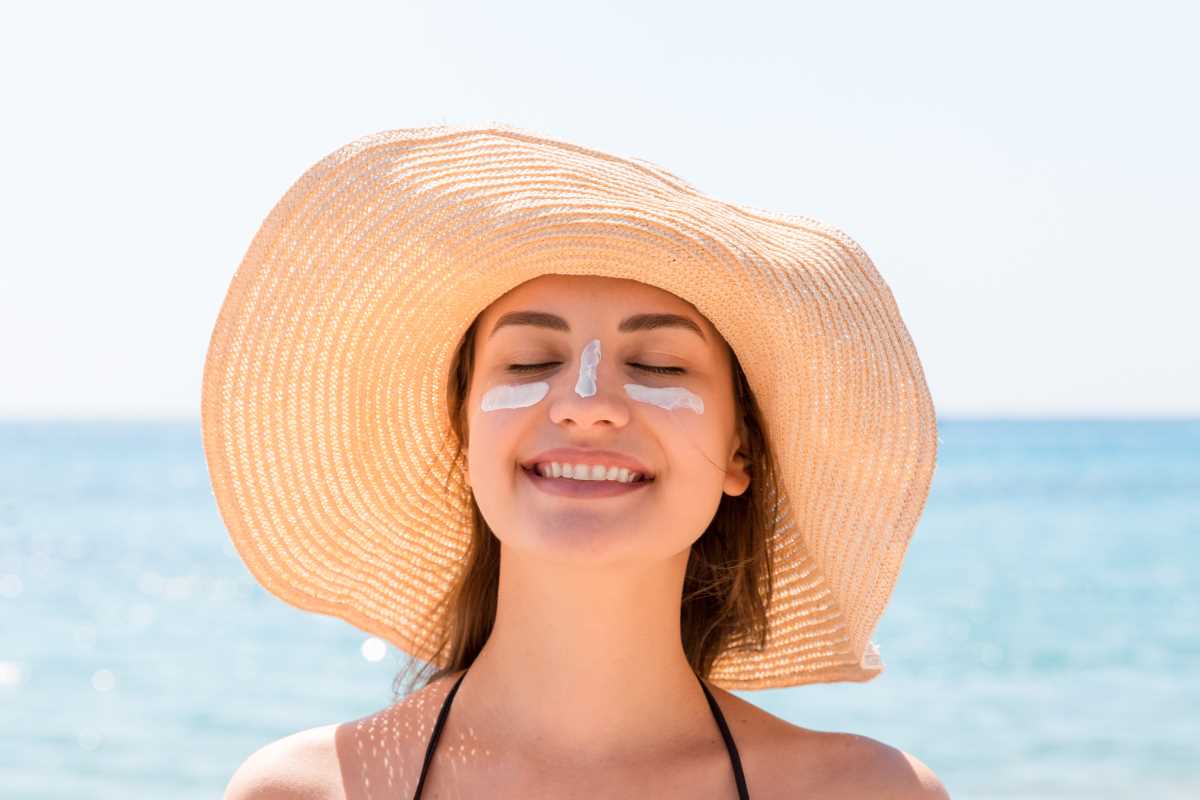A trip to the beach, a vacation in the tropics, or a getaway to somewhere sunny is the perfect opportunity to soak up some vitamin D and unwind. But while you’re packing swimsuits, sunglasses, and flip-flops, there’s one thing you can’t forget about—protecting your skin. Traveling to sunny destinations can be a dream come true for your soul, but it can be a nightmare for your skin if you don’t take the right precautions. From sunburns and dehydration to sand-induced irritation, the environment can be harsher than it looks.
The good news is that with a little planning and some smart skincare choices, you can keep your skin healthy and happy while still enjoying every ray of sunshine. Whether you’re a seasoned sun worshipper or someone gearing up for their first tropical adventure, this guide will arm you with everything you need to know about sun, sand, and skincare while traveling.
It’s easy to underestimate the power of the sun when you’re caught up in beach vibes or sipping your piña colada. However, prolonged sun exposure without proper protection can lead to serious consequences for your skin.
- Sunburn: Even a single bad sunburn increases your risk of skin damage and skin cancer.
- Premature Aging: The UV rays of the sun break down collagen, leading to wrinkles and dark spots.
- Dryness and Peeling: Constant exposure to the sun and saltwater can zap moisture from your skin, leaving it flaky and irritated.
Your skin is your body’s largest organ, and it works hard to protect you. Treating it with care while traveling ensures that you return home with happy memories—not painful burns.
Pack These Skincare Essentials
The first step to protecting your skin begins with what you pack. A few smart choices when prepping your skincare kit can make all the difference.
Your Must-Have Items
Sunscreen with SPF 30 or Higher
Look for broad-spectrum sunscreen that protects against both UVA and UVB rays. If you’re going to be in and out of the water, choose a water-resistant formula.
Lip Balm with SPF
Your lips are often forgotten but are just as susceptible to burns. A moisturizing lip balm with SPF will keep them hydrated and protected.
Aloe Vera Gel
For those moments when you didn’t reapply sunscreen quickly enough, aloe vera soothes sunburn and reduces redness.
Hydrating Moisturizer
The sun and saltwater can dry out your skin, so pack a good moisturizer to replenish hydration at the end of the day.
Facial Mist or Thermal Water Spray
A quick spritz during the day cools you off and keeps your skin refreshed.
Exfoliating Scrub
Use this sparingly (1-2 times a week) to remove dead skin and any sand or debris that might clog your pores.
Wide-Brimmed Hat
Technically not skincare, but it’s one of the best ways to shield your face from direct sun exposure while still looking chic.
Sunscreen Tips for Maximum Protection
Sunscreen is your ultimate armor against harmful UV rays, but are you using it correctly? A lot of people don’t apply enough or forget to reapply, which makes even the best formulas less effective.
How to Apply:
- Use Enough: Adults need about one ounce (a shot glass worth) to cover their entire body. Don’t skimp!
- Apply in Advance: Sunscreen needs at least 15 minutes to absorb into your skin before you head outdoors.
- Reapply Often: Every two hours is a must, especially if you’re sweating or swimming.
- Don’t Forget These Areas: Ears, neck, hands, feet, and the tops of your shoulders are easy to miss but still vulnerable.
Extra Sunscreen Hacks:
- Use a separate sunscreen for your face to avoid clogging pores. Look for non-comedogenic formulas made specifically for sensitive skin.
- If you hate the greasy feel of sunscreen, try a powder sunscreen for easy touch-ups during the day.
Protect Your Skin from Sand Friction
The beach might look serene, but sand can wreak havoc on your skin. Tiny, abrasive granules can cause irritation, especially if they get trapped in your clothing or rub against sunburned skin.
Sand Survival Tips:
- Rinse Off Regularly: Use beachside showers to rinse sand off your body, especially before reapplying sunscreen.
- Wear Rash Guards or Cover-Ups: These not only protect against UV rays but also create a barrier between your skin and the sand.
- Pat, Don’t Rub: Use a soft towel to pat yourself dry. Avoid rubbing, which can push sand deeper into your skin.
If you notice any redness or irritation due to sand, a layer of aloe vera or hydrocortisone cream can reduce symptoms.
Stay Hydrated Inside and Out
It’s easy to forget to drink water when you’re lounging beachside or exploring under the sun, but hydration is key to healthy skin. Dehydrated skin becomes dry, flaky, and more prone to irritation.
Staying Hydrated:
- **Drink Water:) Aim for at least 8-10 glasses a day. Coconut water is another great option for replenishing electrolytes.
- Eat Water-Rich Foods: Snack on fruits like watermelon, oranges, and cucumbers for an added hydration boost.
- Use a Hydrating Serum: Look for serums with ingredients like hyaluronic acid to lock moisture into your skin.
Care for Your Skin After Sun Exposure
Even if you’ve taken all the right precautions, your skin still needs some extra TLC after a day in the sun. Repairing and soothing sun-exposed skin ensures that it stays soft and healthy.
Post-Sun Ritual
- Cool Your Skin: Use a cold compress or take a lukewarm shower to cool down overheated skin.
- Slather on Moisturizer or Aloe Vera: Both help trap moisture and soothe the skin.
- Avoid Harsh Products: Skip alcohol-based products or exfoliants that might irritate sun-sensitive skin.
If you’ve picked up a sunburn despite your best efforts, keep your skin cool, drink extra water, and use aloe vera or over-the-counter remedies to reduce inflammation.
Sunglasses Aren’t Just a Fashion Statement
Did you know the skin around your eyes is some of the most delicate and prone to sun damage? Protecting that area is essential, and it starts with a good pair of sunglasses.
What to Look For:
- UV Protection: Always choose sunglasses labeled with 100% UVA/UVB protection.
- Oversize Styles or Wraparounds: These provide more coverage for the delicate skin around your eyes.
Pair sunglasses with a wide-brimmed hat for added protection and style.
Extra-Sunny Destinations? Be Extra Careful.
If you’re traveling to places near the equator, at high altitudes, or during peak sunlight hours (usually 10 a.m. to 4 p.m.), the sun’s rays are even more intense. Don’t underestimate the power of high UV indexes!
Smart Moves for Extreme Sun:
- Seek shade whenever possible, especially during peak hours.
- Wear UV-blocking clothing and swimwear.
- Use SPF 50 sunscreen for extra protection, and reapply more frequently.
 (Image via
(Image via





.jpeg)